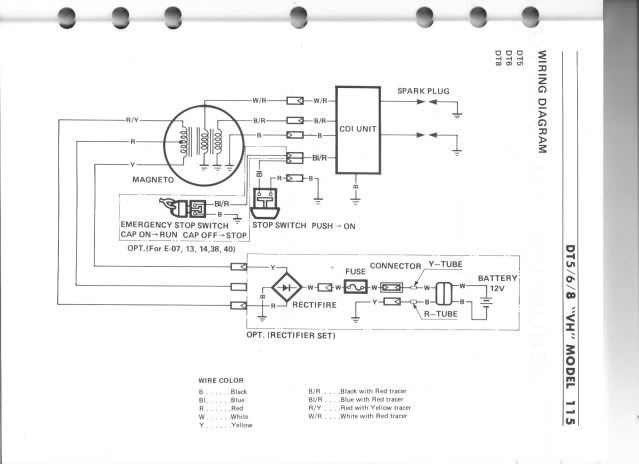John Wasmuth
Active member
I hope this is the right section for this;
I have a 1987 Suzuki DT6 outboard for my jon boat. It has a lighting coil on the stator oposit the ignition coil that provides 12v to power 80w lights. The manual shows the optional rectifier set that is used to charge a 12v battery while the motor is running and shows the wiring diagram. The diagram shows that the fused hot line goes to a two prong receptical and a ground line to the engine frame. then it shows a two prong plug with a line to both terminals on the battery. My question is this; If the ground line is grounded to the motor frame and the other side of the plug to the battery goes to the negative terminal how does it charge the battery? Is it the same idea as using jumper cables where you hook up the positive cables to the terminals and the negative lines to the engine block?
I have located the rectifier assy but the wire set is no longer available so I have to build it.
I have a 1987 Suzuki DT6 outboard for my jon boat. It has a lighting coil on the stator oposit the ignition coil that provides 12v to power 80w lights. The manual shows the optional rectifier set that is used to charge a 12v battery while the motor is running and shows the wiring diagram. The diagram shows that the fused hot line goes to a two prong receptical and a ground line to the engine frame. then it shows a two prong plug with a line to both terminals on the battery. My question is this; If the ground line is grounded to the motor frame and the other side of the plug to the battery goes to the negative terminal how does it charge the battery? Is it the same idea as using jumper cables where you hook up the positive cables to the terminals and the negative lines to the engine block?
I have located the rectifier assy but the wire set is no longer available so I have to build it.
























































